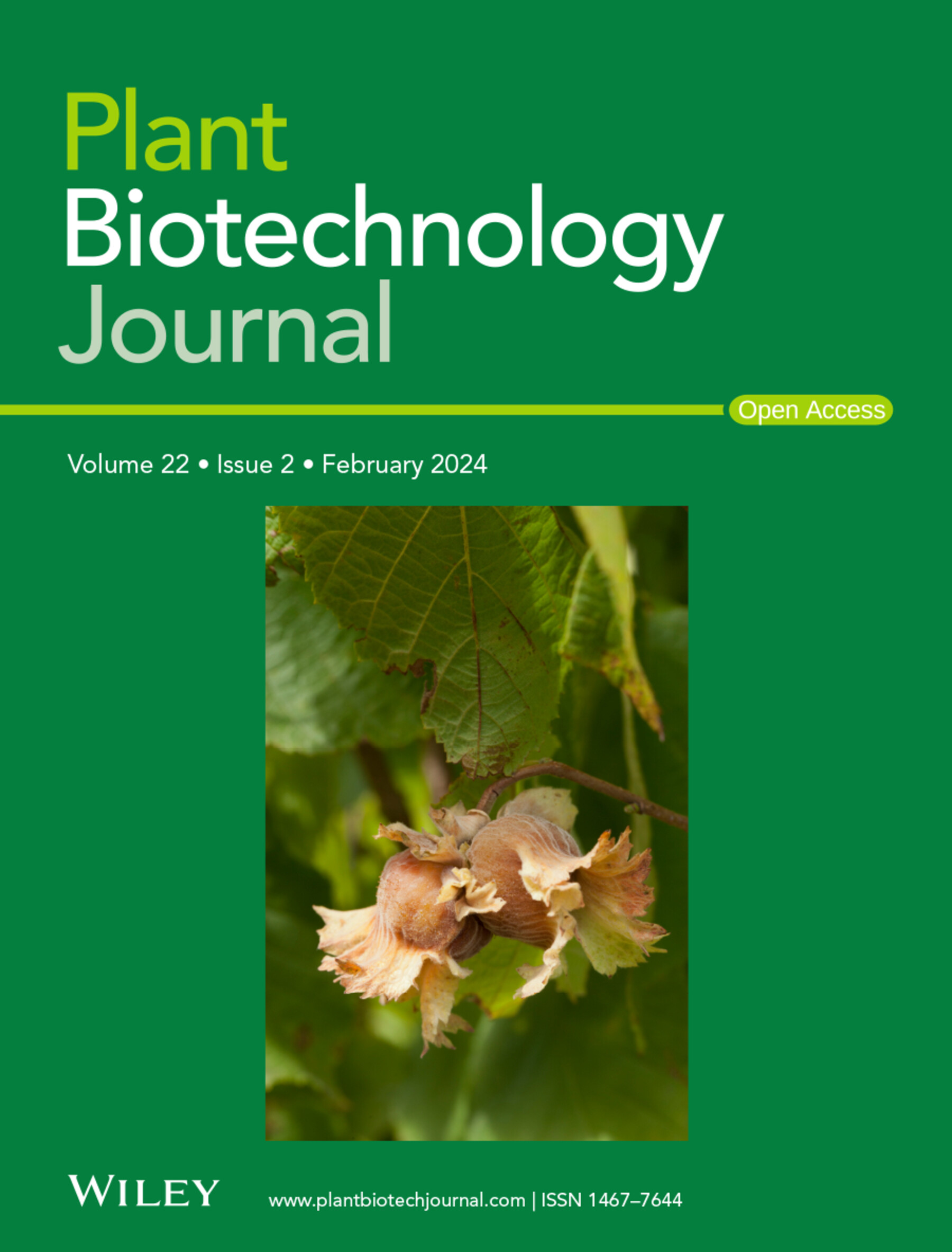重组荧光免疫球蛋白G作为创新免疫诊断试剂的产生和植物生产。
IF 10.5
1区 生物学
Q1 BIOTECHNOLOGY & APPLIED MICROBIOLOGY
引用次数: 0
摘要
用于现场筛查的免疫诊断系统的需求日益增加,但需要昂贵的试剂,如化学修饰的抗体。为了获得作为诊断试剂的生物分子,通过将单克隆抗体5H3的重链与两种不同的荧光蛋白:绿色荧光蛋白(5H3GFP)和青色可激发的橙色荧光蛋白(5H3CyOFP1)融合,产生了新的重组荧光免疫球蛋白G。该工程抗体通过短暂农业浸润法在烟叶植物中表达,作为可持续、经济、易于规模化的生物反应器,纯化的5H3GFP和5H3CyOFP1的产量分别为80和35 mg/kg。两种重组蛋白都保留了识别原单抗抗原(黄曲霉毒素M1,一种乳制品污染物)的能力,同时能够在绿色或橙色光下发出荧光。为了展示其在诊断领域的实际应用,利用荧光抗体建立了两种黄曲霉毒素M1检测的快速筛选系统:侧流免疫分析法和基于oled的装置。对于这两种诊断系统,抗原特异性荧光信号以及首次竞争分析获得。虽然这些检测还需要进一步实施,但我们的结果表明,基于植物产生的荧光重组抗体,开发新的快速分析系统是切实可行的。本文章由计算机程序翻译,如有差异,请以英文原文为准。
Generation and plant production of recombinant fluorescent immunoglobulin G as innovative immunodiagnostic reagents.
Immunodiagnostic systems for on-site screening are increasingly in demand but require expensive reagents such as chemically modified antibodies. To obtain biomolecules as ready-to-use reagents for diagnostics, new recombinant fluorescent immunoglobulins G were generated by fusion of the heavy chain of a monoclonal antibody, 5H3, to two different fluorescent proteins: Green Fluorescent Protein (5H3GFP) and Cyan-excitable Orange Fluorescent Protein (5H3CyOFP1). The engineered antibodies were expressed by transient agroinfiltration in Nicotiana benthamiana plants, used as bioreactor sustainable, cost-effective and easy to scale up, with a yield of 80 and 35 mg/kg of purified 5H3GFP and 5H3CyOFP1, respectively. Both recombinant proteins retained the ability to recognize the antigen of the original mAb (aflatoxin M1, a contaminant of dairy products), while simultaneously being able to emit fluorescence in the green or orange light. To demonstrate their practical application in the diagnostic field, fluorescent antibodies were exploited to set up two fast screening systems for aflatoxin M1 detection: a lateral flow immunoassay and an OLED-based device. For both diagnostic systems, antigen-specific fluorescence signals as well as a first competitive assay were obtained. Although these assays will need a further implementation, our results demonstrate a concrete possibility to develop novel and fast analytical systems based on fluorescent recombinant antibodies produced in plants.
求助全文
通过发布文献求助,成功后即可免费获取论文全文。
去求助
来源期刊

Plant Biotechnology Journal
生物-生物工程与应用微生物
CiteScore
20.50
自引率
2.90%
发文量
201
审稿时长
1 months
期刊介绍:
Plant Biotechnology Journal aspires to publish original research and insightful reviews of high impact, authored by prominent researchers in applied plant science. The journal places a special emphasis on molecular plant sciences and their practical applications through plant biotechnology. Our goal is to establish a platform for showcasing significant advances in the field, encompassing curiosity-driven studies with potential applications, strategic research in plant biotechnology, scientific analysis of crucial issues for the beneficial utilization of plant sciences, and assessments of the performance of plant biotechnology products in practical applications.
 求助内容:
求助内容: 应助结果提醒方式:
应助结果提醒方式:


